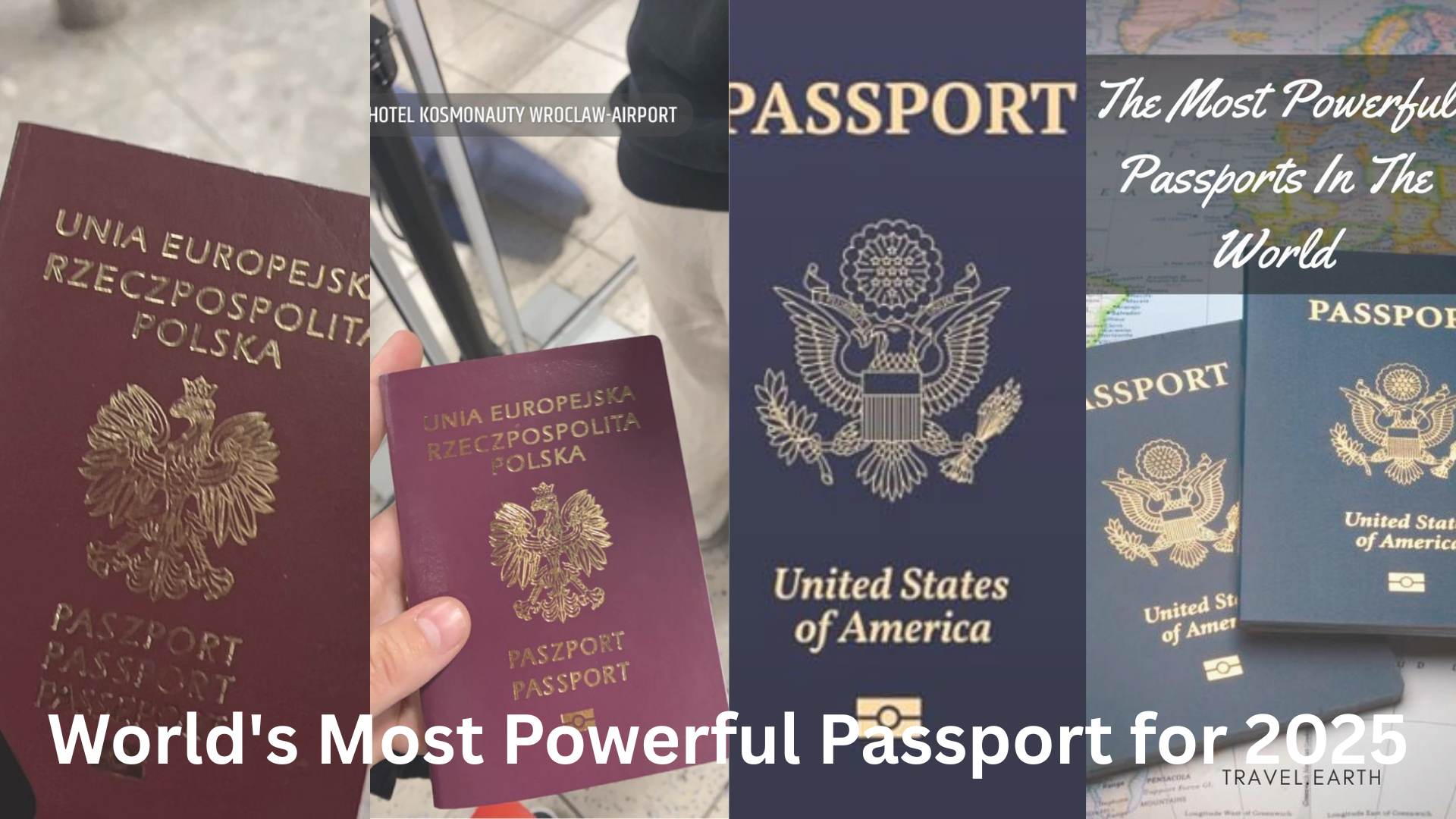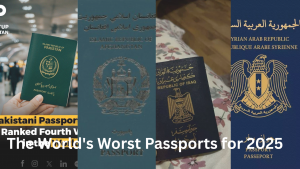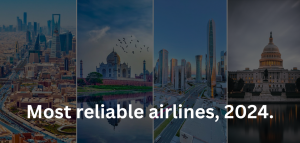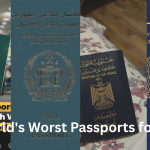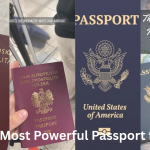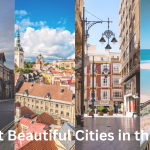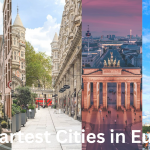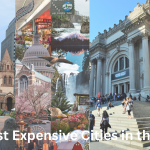A passport’s power lies in its ability to open doors to global destinations without the hassle of visas. According to the Henley Passport Index 2024, which ranks 199 passports based on visa-free access to 227 destinations using International Air Transport Association (IATA) data, Singapore leads with access to 195 countries. This article explores the top 10 most powerful passports—Singapore, France, Germany, Italy, Japan, Spain, and others—detailing their visa-free scores, underlying factors, and tips for travelers to leverage their passport’s strength.
1. Singapore (195 Visa-Free Destinations)
Singapore holds the top spot for 2024, offering visa-free or visa-on-arrival access to 195 destinations, a feat celebrated in posts on X. Its strategic diplomacy, including China’s 2024 visa waiver, boosts its score. With a 91.41 Destination Significance Score (DSS) per VisaGuide, Singapore’s passport reflects its economic prowess (GDP: $460 billion) and global connectivity. Travelers enjoy seamless entry to Europe, Asia, and beyond. Apply for eVisas online for destinations requiring them, and check Singapore’s MFA website for updates.
2. France, Germany, Italy, Japan, Spain (192 Visa-Free Destinations)
These five nations tie for second, each with visa-free access to 192 destinations, down from a shared first place in early 2024 (194 destinations). Their strong EU and Asian diplomatic ties, reflected in G7’s 85% global access score, drive their rankings. France’s cultural hubs, Germany’s economic might, Italy’s tourism appeal, Japan’s regional influence, and Spain’s EU leverage ensure broad mobility. Travelers should verify eTA requirements (e.g., Canada) and visit in spring for Europe’s mild weather.
3. Austria, Finland, Ireland, Luxembourg, Netherlands, South Korea, Sweden (191 Visa-Free Destinations)
Seven countries share third place, offering visa-free access to 191 destinations. EU members benefit from Schengen agreements, while South Korea’s rise reflects Asia’s dominance, per Henley. Finland and Sweden score high on human development (HDI: 0.94), enhancing their DSS. Ireland’s business-friendly policies shine in Nomad’s 2025 rankings. Use eVisas for Oceania, and carry travel insurance for Schengen (minimum €30,000 coverage).
4. Belgium, Denmark, New Zealand, Norway, Switzerland, United Kingdom (190 Visa-Free Destinations)
This group, with 190 visa-free destinations, blends European stability and Commonwealth ties. The UK, despite a post-Brexit drop from first in 2014, remains strong, while New Zealand’s high HDI (0.93) boosts its rank. Switzerland’s neutrality and Denmark’s tourism policies enhance mobility. Travelers should expect Europe’s 2025 ETIAS visa waiver for U.S. visitors. Visit in fall for cultural festivals like Oktoberfest in Belgium.
5. Australia, Portugal (189 Visa-Free Destinations)
Australia and Portugal, with 189 destinations, reflect strong diplomatic outreach. Australia’s Oceania influence and Portugal’s EU membership, coupled with expat-friendly policies, drive their rankings. Australia’s low openness score (similar to the U.S.’s 45 nationalities) slightly limits its climb. Book eTAs for Canada or Asia, and visit Australia in spring (September-November) for vibrant Sydney festivals.
6. Greece, Poland (188 Visa-Free Destinations)
Greece and Poland, with 188 destinations, benefit from EU mobility and rising global influence. Greece’s tourism surge (32 million visitors annually) and Poland’s economic growth (GDP: $700 billion) bolster their passports. Greece’s tax policies attract nomads, per Nomad Capitalist. Use Greece as a Schengen entry point, and visit Poland in summer for cultural events like Krakow’s Pierogi Festival.
7. Canada, Czechia, Hungary, Malta (187 Visa-Free Destinations)
These nations, with 187 visa-free destinations, offer diverse strengths. Canada’s Commonwealth ties, Czechia’s Schengen access, Hungary’s economic reforms, and Malta’s non-dom tax regime (Nomad score: 40) enhance their rankings. Canada’s 185 destinations slightly outpace the U.S. Apply for eVisas for Asia, and explore Malta’s historic Valletta in spring for mild weather.
8. United States (186 Visa-Free Destinations)
The U.S., ranked eighth with 186 destinations, has slipped from first in 2014 due to limited reciprocity (45 nationalities enter visa-free). Its economic power (GDP: $21 trillion) and military strength don’t fully offset diplomatic constraints, like Brazil’s visa requirement. Check the U.S. State Department’s visa tool for updates, and visit Europe before ETIAS starts in 2025.
9. Estonia, Lithuania, United Arab Emirates (185 Visa-Free Destinations)
The UAE’s meteoric rise (106 destinations added since 2014) reflects its tourism push (Dubai: 17 million visitors annually). Estonia and Lithuania leverage EU mobility and digital innovation (Estonia’s e-Residency). Visit the UAE in winter (November-February) for festivals like Dubai Shopping Festival, and use eVisas for African destinations.
10. Iceland, Latvia, Slovakia (184 Visa-Free Destinations)
These smaller European nations, with 184 destinations, benefit from Schengen and EU agreements. Iceland’s tourism boom (2 million visitors annually) and Latvia’s digital nomad policies enhance their appeal. Slovakia’s economic growth adds stability. Visit Iceland in summer for midnight sun, and carry biometric passports for seamless entry.
Why These Passports Are Powerful
The top 10 passports reflect strategic diplomacy, economic strength, and regional alliances. Singapore’s 195 destinations and Asia’s dominance (Japan, South Korea) stem from reciprocal visa waivers, like China’s 2024 policy. Europe’s 23 of 30 top passports leverage Schengen and EU ties. The global mobility gap has widened, with Singapore accessing 169 more destinations than Afghanistan (26). High GDP (G7: 44% global share) and HDI scores correlate with visa-free access. Challenges include reciprocity issues (U.S.) and geopolitical shifts (UK post-Brexit).
Key Factors Driving Rankings
- Visa-Free Access: Singapore’s 195 destinations set the benchmark, per Henley.
- Diplomacy: UAE’s 72 new destinations since 2015 show proactive agreements.
- Economic Power: High-GDP nations (Japan, Germany) secure better waivers.
- Openness: Low openness scores (U.S.: 78th, Australia) limit rankings.
- Tourism: Greece and UAE’s tourism booms enhance global appeal.
Tips for Travelers
- Check Requirements: Use the U.S. State Department’s visa tool or IATA’s Timatic for updates.
- eVisas/eTAs: Apply online for Canada, Australia, or African nations to streamline entry.
- Insurance: Carry travel medical insurance (e.g., €30,000 for Schengen) for unexpected costs.
- Timing: Visit Europe in spring or fall for fewer crowds, or Singapore in February for Chinese New Year.
- Biometric Passports: Ensure your passport has a smart chip for faster border checks.
Conclusion
In 2024, Singapore’s passport leads with unmatched visa-free access to 195 destinations, followed closely by European and Asian powerhouses. The Henley Passport Index highlights a growing mobility gap, with top passports offering vastly more freedom than those at the bottom, like Afghanistan’s 26 destinations. Strategic diplomacy, economic strength, and tourism drive these rankings, but travelers must stay informed on visa policies, especially with Europe’s 2025 ETIAS changes. Leverage these powerful passports for seamless global exploration, and plan strategically to maximize travel opportunities.
